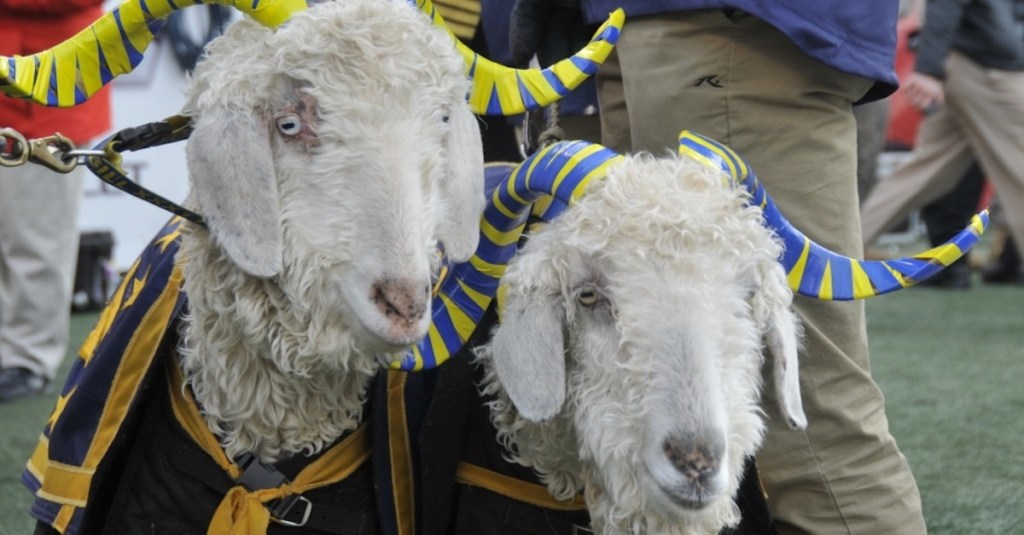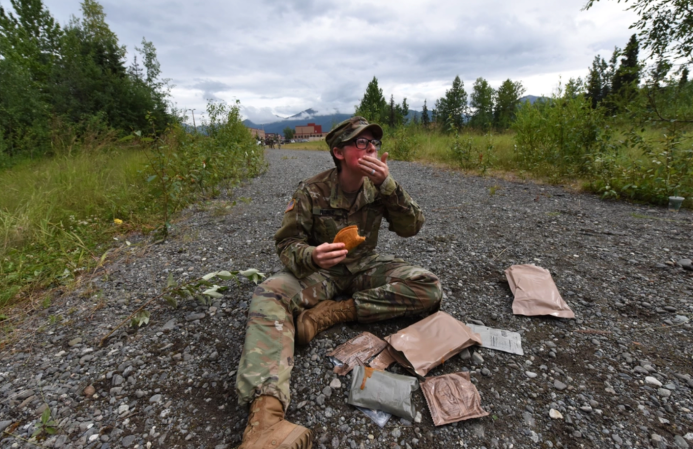Sure, you may have been in the military for years and you may have worked hard for your rank. But it may surprise you to learn that you will always be outranked by at least one of these animals, who have earned military rank, medals, and awards. And these aren’t just cuddly mascots — some of them have seen combat action!
Here are the most impressive and high-ranking military animals of all time:
1. Nils Olav
Nils Olav, a penguin, is colonel-in-chief and official mascot of Norway’s Royal Guard. In 2008, he was knighted — yes, knighted — by King Harald V. The original penguin named Nils Olav first served in 1972, and was named in honor of two great Norwegians: Nils Egelien and King Olav V. This high-ranking mascot lives in the Edinburgh Zoo, in quarters befitting his rank.
2. King Neptune
King Neptune the pig was originally just Parker Neptune. He received a promotion to King (that’s a rank, right?) during World War II when he was sold to an Illinois Navy recruiter. Although the pig was originally intended to be served at dinner, the Navy instead made him a star by promoting him to King and sending him on tour to sell war bonds. He wore a crown and a blue Navy blanket, and would stand on stage as his parts were “auctioned off” to the highest bidders. Ultimately, King Neptune helped raise over million for the Navy!
When he died in 1950, he received a Navy funeral with full military honors.
3. Sergeant Major Fosco
Sergeant Major Fosco was one of the first military working dogs to complete an airborne jump while being held by his handler. Military working dogs are traditionally awarded one rank higher than that of their handler, as a reminder that the handler must always treat their animal with respect. Because Sgt. Major Fosco’s handler was a 1st Sgt., this dog bears the rank of someone who has already served a full, 20-year career!
Perhaps in dog years, that’s about right.

4. Staff Sergeant Reckless
Staff Sergeant Reckless was a Marine pack horse during the Korean War. She was purchased in Korea and carried supplies and ammunition for the Marines of 5/1 Recoilless Rifle Platoon. During one battle, she made 51 solo (unguided) trips to resupply the lines and bring wounded men to safety. During her time in service, she received a battlefield promotion to sergeant, two Purple Hearts, and a Good Conduct Medal. She was the first horse known to have participated in an amphibious landing. After the war, Reckless was brought back to America and promoted to staff sergeant. A metal statue in her honor was recently unveiled at Camp Pendleton.

5. Sergeant Chesty XIV
Sgt. Chesty XIV, named after the most highly-decorated Marine, Chesty Puller, is the current official mascot of the Marine Corps. He has his own dog-sized National Defense medal.
He also has sergeant responsibilities, like training the junior Marines in his charge. Private Chesty XV is the official Marine Corps mascot apprentice. I wonder if he causes as much trouble for his sergeant as the average private does on any given weekend?
6. Sergeant Major Jiggs
Sergeant Major Jiggs was the original Marine Corps bulldog mascot. His owner was the famous Maj. General Smedley Butler — one of the only Marines to earn two Medals of Honor. Jiggs began his career in 1922 as a private and advanced through the ranks to reach E-9. If you already have two medals of honor, you can probably give your dog any rank you want, right?

7. Lance Corporal Billy Windsor
Lance Corporal Billy Windsor the Goat is a salaried member of the British Army in the Royal Welsh Regiment. The position includes membership in the Corporal’s mess and the right to be saluted by subordinates. However, the goat was demoted to fusilier in 2006 after an unfortunate head-butting incident against a drummer in the 1st Battalion.
8. Sinbad, the Chief Dog
Sinbad, the Chief Dog, was an enlisted member of the U.S. Coast Guard for 11 years and saw combat during World War II. He served on the U.S. Coast Guard Cutter George W. Campbell. His handler originally intended to give the dog to his girlfriend as a gift, but soon discovered she wouldn’t be able to keep him. The only way to keep him on board was to enlist him, so Sinbad’s pawprint was stamped onto his own unique set of enlistment papers, and he became an official member of the crew.

9. Master Sergeant Big Deuce VI
Master Sergeant Big Deuce VI, the Army’s official donkey mascot, retired after 20 years of service. The Army has long used the donkey as a mascot because it’s a reminder of how the beasts of burden have long moved Army supplies, such as howitzers and ammunition. The 2-2nd FA Battalion “Mule Soldiers” out of Fort Sill, OK, have had a mascot named Big Deuce since 1950. During his 20-year career, Master Sgt. Big Deuce VI received several promotions, but his handlers report that he was demoted twice and received several Article 15s for attempting to go AWOL and for assaulting a commissioned officer in his change of command.

10. Corporal Short Round V
Corporal Short Round V is the Army’s goat mascot, who accompanies their donkey mascot Big Deuce at official events. He recently retired, and was replaced by Private Short Round VI, who had her enlistment ceremony at Fort Sill in 2018.
11. Sgt. 1st Class Boe and Sgt. 1st Budge
Sgt. 1st Class Boe and Sgt. 1st Class Budge were the first trained therapy dogs to be deployed to Iraq in 2007. Budge eventually contracted cancer and passed away in 2010. A memorial service was held for him at Fort Gordon, Georgia. Boe was reassigned to Fort Benning, Georgia.
12. Master Sergeant Maverick
Master Sergeant Maverick is a trained therapy dog who works with America’s VetDogs. Since 2009, he has been assigned to the Traumatic Brain Injury clinic at Eisenhauer Army Medical Center.
13. Sergeant Stubby
Sergeant Stubby the dog was adopted by soldiers of the 102nd Infantry Regiment and smuggled to France during WWI. He was trained to raise his paw in salute, which secured his place as the regimental mascot. Stubby helped his unit in the trenches by sniffing out poison gas attacks and warning of incoming artillery. He once helped capture and imprison a German spy, for which he received a medal for heroism.


















